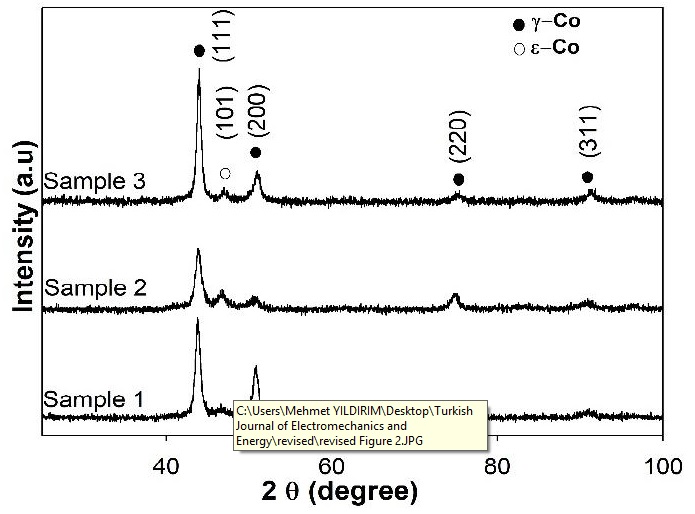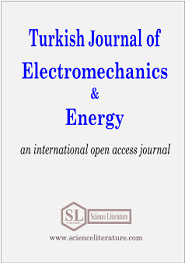
Production of Co-Cr-Mo Biomedical Alloys via Investment Casting Technique
Abstract
Co-Cr-Mo biomedical alloys with three different compositions were produced by investment casting technique from high purity constituents. The structural properties such as phase relationships, microstructures, and hardness of the alloys were studied. The phase relationships of the samples were investigated using x-ray diffraction and the microstructural characterization were performed using light optical microscopy. It was found that the microstructure of the samples was composed of Co-based dendrites (matrix phase) and carbides (second phase particles) precipitated at grain boundaries and interdendritic regions. These carbides act as strengthening particles in such alloys. Moreover, the mean hardness of these three samples were measured as 24.2, 24.5 and 29.6 HRC. The values were found to be in a good agreement with the optimum hardness value given in the ASTM F75 standards.
Full Text:
PDFReferences
J. R. Davis, Handbook of materials for medical devices ASM international materials park, (2003).
ASTM F75-12 Standard: Co-28Cr-6Mo Alloy castings and casting alloy for surgical implants, (2012).
ISO 5832-4 Standard: Implants for surgery- metallic materials - Part 4: Cobalt-chromium-molybdenum casting alloy, (2014).
J. A. Disegi, R. L. Kennedy, and R. Pilliar, Cobalt based alloys for biomedical applications ASTM STP 1365 West Conshohocken, PA, (1999).
B. P. John, and K. K. Young, Metallic Biomaterials, Biomedical Eng. Handbook, Unit:37, USA, (2000)
L. Z. Zhuang, and E. W. Wagner, Effects of cooling rate control during the solidification process on the microstructure and mechanical properties of cast Co-Cr-Mo alloy used for surgical implants, J. Mater. Sci., 24(2), 381-388, (1989).
J. F. Bates, and A. G. Knapton, Metals and alloys in dentistry, Inter. Metals Rev., 22(1), 39-60, (1977).
L. Shi, O. D. Northwood, and C. Zhengwang, The properties of a wrought biomedical cobalt-chromium alloy, J. Mater. Sci., 29(5), 1233-38, (1994).
F. B. Pickering, Physical Metallurgy and Design of Steels, Applied Science, Essex, UK, 10-22, (1978).
S. H. Lee, E. Takahashi, N. Nomura, and A. Chiba, Effect of heat treatment on microstructure and mechanical properties of Ni- and C-Free Co-Cr-Mo alloys for medical applications, Mater. Trans., 46(8), 1790-1793, (2005).
J. V. Giacchi, C. N. Morando, O. Fornaro, and H. A. Palacio, Microstructural characterization of as-cast biocompatible Co-Cr-Mo alloys, Material Characterization, 62, 53-61, (2011).
T. Matkovic, P. Matkovic, and J. Malina, Effects of Ni and Mo on the microstructure and some other properties of Co-Cr dental alloys, J. Alloys Compd., 366, 293-297, (2004).
L. Shi, O. D. Northwood, C. Zhengwang, Alloy Design and Microstructure of a Biomedical Co-Cr Alloy, J. Mater. Sci. 28(5), 1312-1316, (1993).
C. D. Orpis, R. Liu, M.x. Mao, and X.J. Wu, Development of stellite alloy composites with sintering/HIPing technique for wear-resistant applications, Materials Design, 28, 581-591, (2007).
J. C. Setcos, A. B. Mahani, L. Di Silvio, I. A. Mjör, and N. H. F. Wilson, The safety of nickel containing dental alloys, Dental Materials, 22(12), 1163-68, (2006).
JCPDS Database, International Center for Diffraction Data, Swarthmore, USA, PDF 15-0806.
JCPDS Database, International Center for Diffraction Data, Swarthmore, USA, PDF 05-0727.
M. Hansen, and K. Anderko, Constitution of binary alloys, McGraw-Hjll, New York, (1958).
K. Yoda, Suyalatu, A. Takaichi, N. Nomura, Y. Tsutsumi, H. Doi, S. Kurosu, A. Chiba, Y. Igarashia, and T. Hanawa, Effects of chromium and nitrogen content on the microstructures and mechanical properties of as-cast Co–Cr–Mo alloys for dental applications, Acta Biomaterialia, 8(7), 2856-62, (2012).
URN: https://sloi.org/urn:sl:tjoee3187
Copyright (c) 2018 Turkish Journal of Electromechanics and Energy

This work is licensed under a Creative Commons Attribution-NonCommercial 4.0 International License.

 Indexed in:
Indexed in:
















